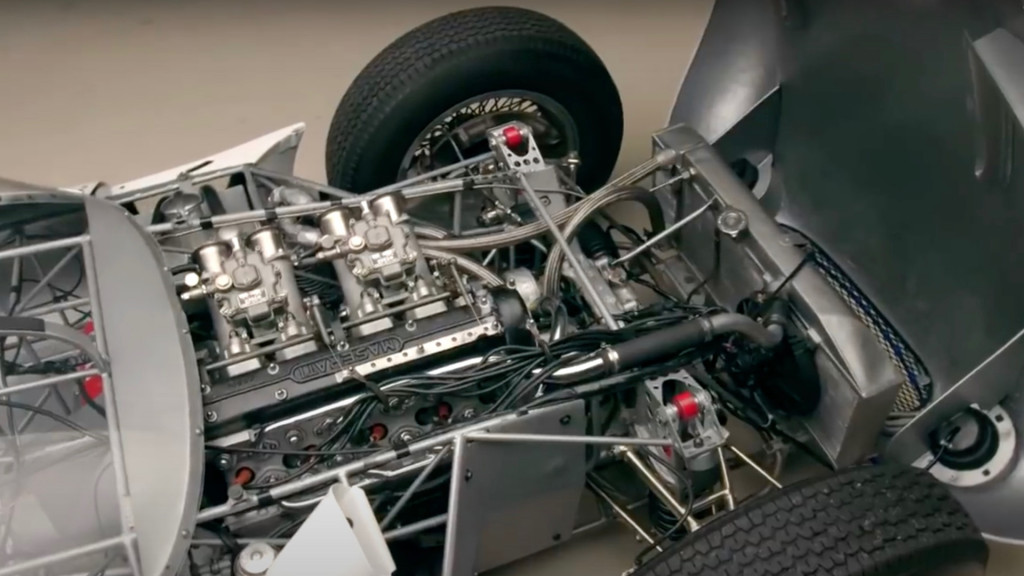Few cars combine form and function like the 1960 Maserati Tipo 61 "Birdcage." Beneath its stylish exterior, the Birdcage was one of the most advanced cars of its time, as Jay Leno and Jeff O'Neill, owner of the car featured here, explain on a recent episode of Jay Leno's Garage.
The Birdcage got its name from its chassis, which was constructed from an intricate network of 200 thin chrome-moly steel tubes. This maintained structural rigidity while saving weight. The bare chassis weighs just 155 pounds, while the entire car tips the scales at around 1,800 pounds, according to O'Neill. A look under the tiling nose shows some of that tubular structure. The design also allowed the chassis to sit very low, as evidenced by the protruding wheel humps.
The first Birdcage variant was the Tipo 60 of 1959, which used a 200-horsepower 2.0-liter inline-4. The car featured here is a later Tipo 61 model, which, at the suggestion of legendary racing driver Stirling Moss, got a 250-hp 3.0-liter inline-4. Just 17 of these more-powerful models were built, including one Tipo 60/61 conversion. The tight piston clearance (the Tipo 61 used the original 2.0-liter block) is a weak point, but the car is otherwise fairly bulletproof, O'Neill says. He also notes the top speed was about 160 mph.

1960 Maserati Tipo 61
This particular car was owned by the American racing team Camoradi, and it raced at Le Mans, the Nürburgring, and other tracks around the world.
While a pure race car, the Birdcage is still tractable enough to be driven on the road, something that would be impossible with modern race cars. Maserati tried to strike a similar balance in the early 2000s with the Ferrari Enzo-based MC12, but that car was never very successful on track.
Maserati has largely avoided motorsports for more than a decade, though the automaker noted its upcoming MC20 supercar "is the natural evolution" of the MC12, indicating a possible dual identity as a race car and road car.
Watch the full video to hear the Tipo 61 Birdcage at full chat. The video doesn't include the usual garage visit, and the sound of the engine makes it tough to hear the conversation. Still, it's a treat to see this car under power at all, let alone on public roads.